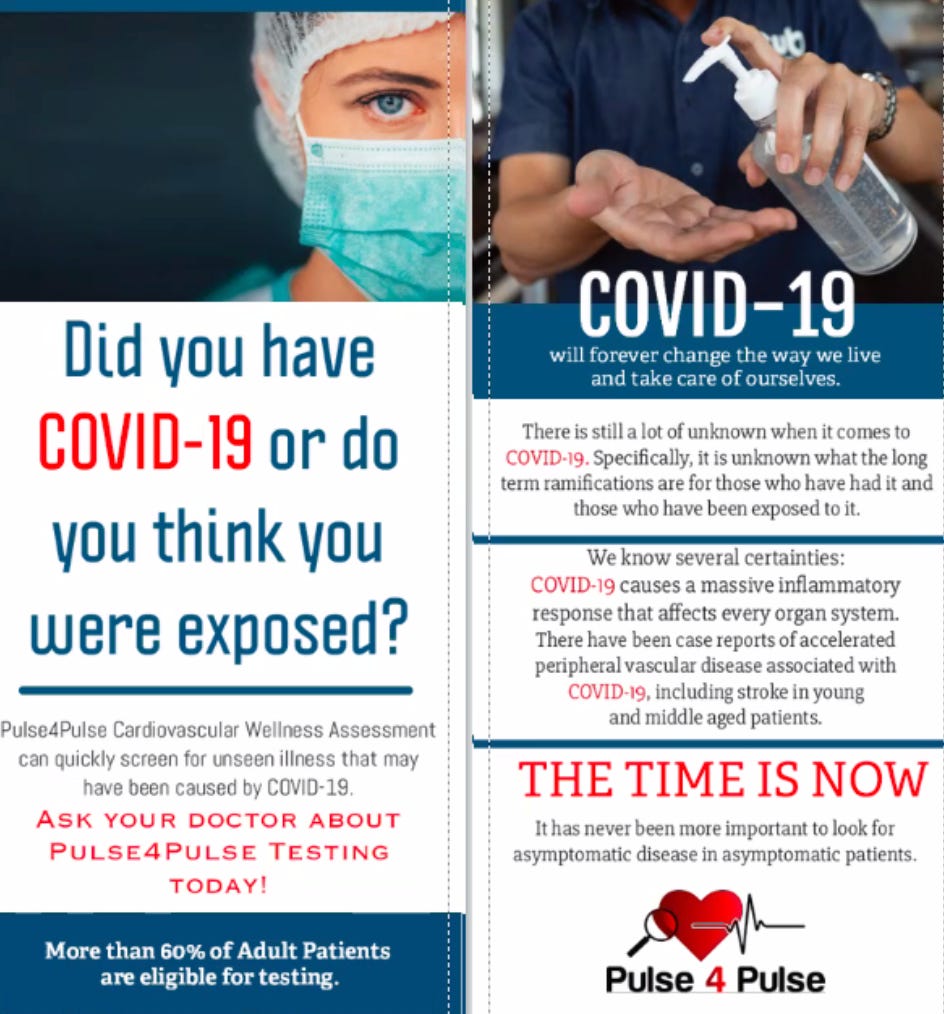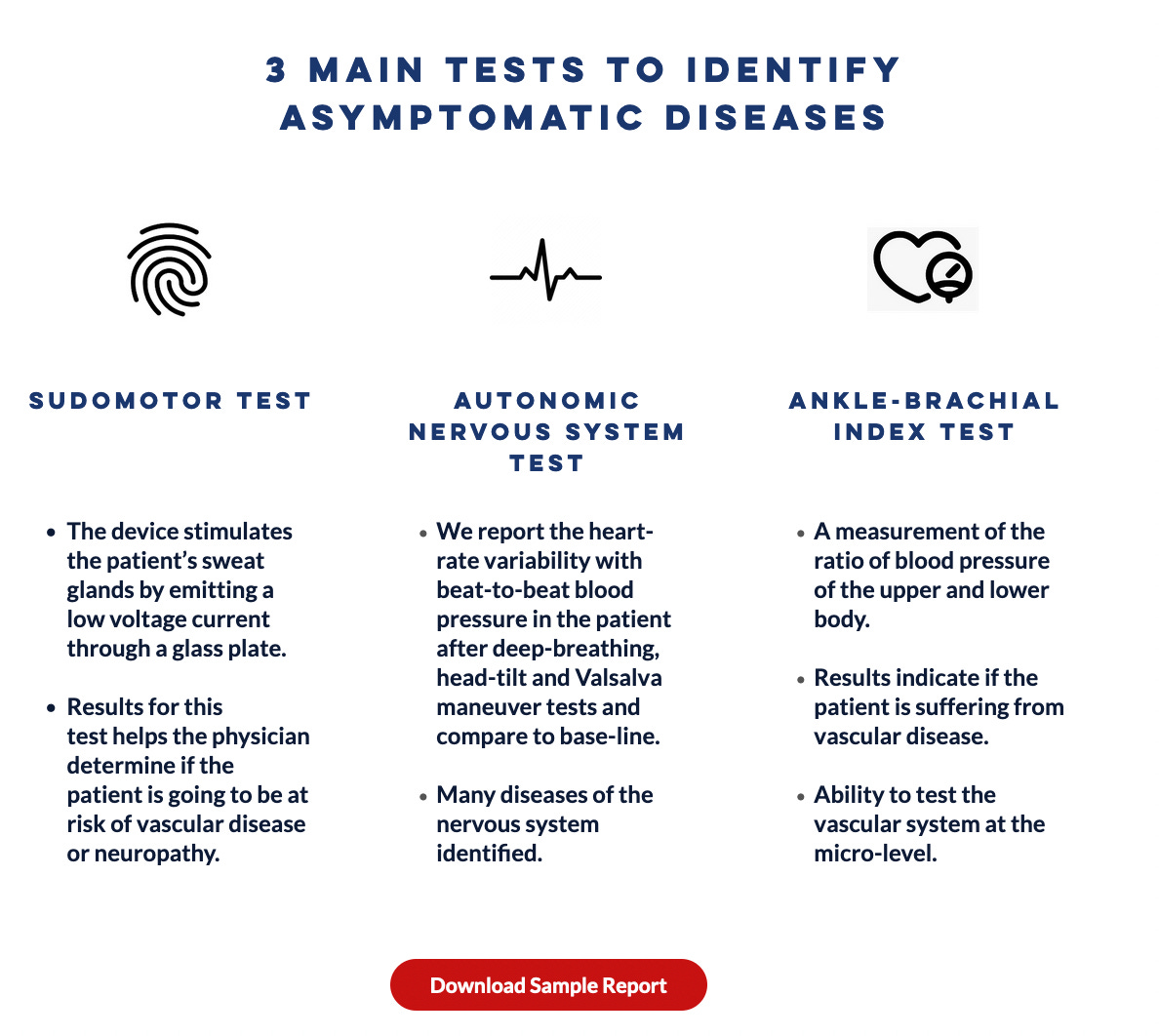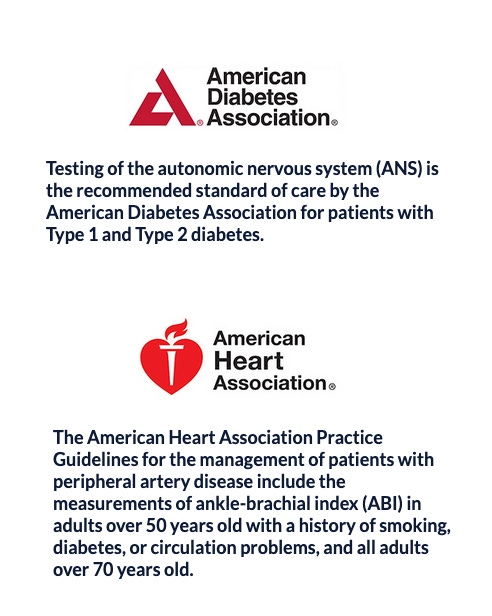Do you have Long COVID or Chronic Pain, and think that perhaps you may have dysautonomia? How about chronic back pain and neuropathy? Or leg pain and color changes or blood clots that may signify peripheral vascular disease (PVD)?
Now there is a monitor that can be made available in your doctor or chiropractor’s office, that may show changes that point to these subtle diagnoses that usually do not declare themselves until disease is far advanced.
Pulse-4-Pulse Monitor. This monitor system is geared to provide better patient care goals. In this noninvasive approach that takes about 20 minutes and is reimbursed by insurance, one can obtain test results normally unavailable from traditional labs or other testing like an EKG of the heart or something more invasive like an angiogram (i.e., injection of dye) of the legs.
Test results may point toward early signs of a serious condition like PVD, a condition that can lead to blood clots and loss of leg circulation. In extreme bases, PVD can lead to a leg amputation or the blood clot can go to the brain or lungs, causing a stroke or pulmonary embolus, respectfully.
In one case, a 41-year old treated for leg pain due to spinal stenosis complained to her doctor for three years. The doctor liked to refresh his view on patients, as if he was seeing them for the first time. He suggested this Pulse-4-Pulse Monitor test on the patient, who was a nurse. She said,
“But we know my pain is from spinal stenosis.”
She was a nurse, eventually agreeing there was nothing to lose. So they did the test and found … she had peripheral artery disease! Her doctor said,
“I never would have guessed her pain was from neuropathy associated with ischemia.”
The doctor tells his story on this video and atributes the Sudomotor function part of this test as making the diagnosis.
He credits the Pulse-4-Pulse system for distinguishing between pure “spinal stenosis” pain and “peripheral vascular pain”
Focus is on Early Detection of Chronic Disease
Ankle Brachial Index (ABI). Before signs of disease are evident and patients have no complaints or symptoms, this FDA- approved study examines nerve function, the microcirculation of the feet and hands, and involves a technique similar to the TENS unit with a small pulse of electricity. Most patients do not feel it.
Sudomotor Test. Describes the microvascular circulation and can indicated decreases in perfusion to an area like the legs.
Autonomic Nervous System (ANS).
Increase Patient Compliance with Treatments. Patients can see the printout results in normal or abnormal ranges, improving compliance with medications.
Insurance usually pays for the test every three months.
This monitor has the ability to test:
Ankle-Brachial Index Test. Blood Pressure in 4 Extremities: Arms and Legs. Allows a test for peripheral blood pressure disease.
Sudomotor Ability. Nerve function and sweating.
Autonomic Nervous System test. Tests beat-to-beat variability after deep breathing, head tilt and Valsalva maneuver vs baseline. May help diagnose dysautonomia/POTS.
The patient may receive a 4-page report and the doctor may receive an electronic report that goes into the electronic medical system (EMR).
How it Works
A medical technician arrives to the office with the portable machine that occupies space for two people to sit. The patient occupies a chair, places hands and feet on a metal plate having electrodes connected to it.
Are You at Risk?
Studies show these patients may benefit if they have a history of one of these conditions: Type I and Type II Diabetes, age over 50 with a smoking history, circulation problems, all adults over age 70.
Stay tuned for more. This may be a perfect wellness-based practice tool that physicians, physical therapists, naturopaths, chiropractors, and alternative medicine providers can utilize to enhance the early diagnosis of peripheral vascular disease, neuropathy, and dysautonomia/POTS. Dysautonomia is associated with Long COVID.
= Billing can be made to your insurance. You should also know that your doctor may get a commission on units prescribed.
WHAT I REALLY THINK
If you have dysautonomia or chronic issues no one can fix, you can spend a lot
Keep reading with a 7-day free trial
Subscribe to The Rebel Patient™ to keep reading this post and get 7 days of free access to the full post archives.







